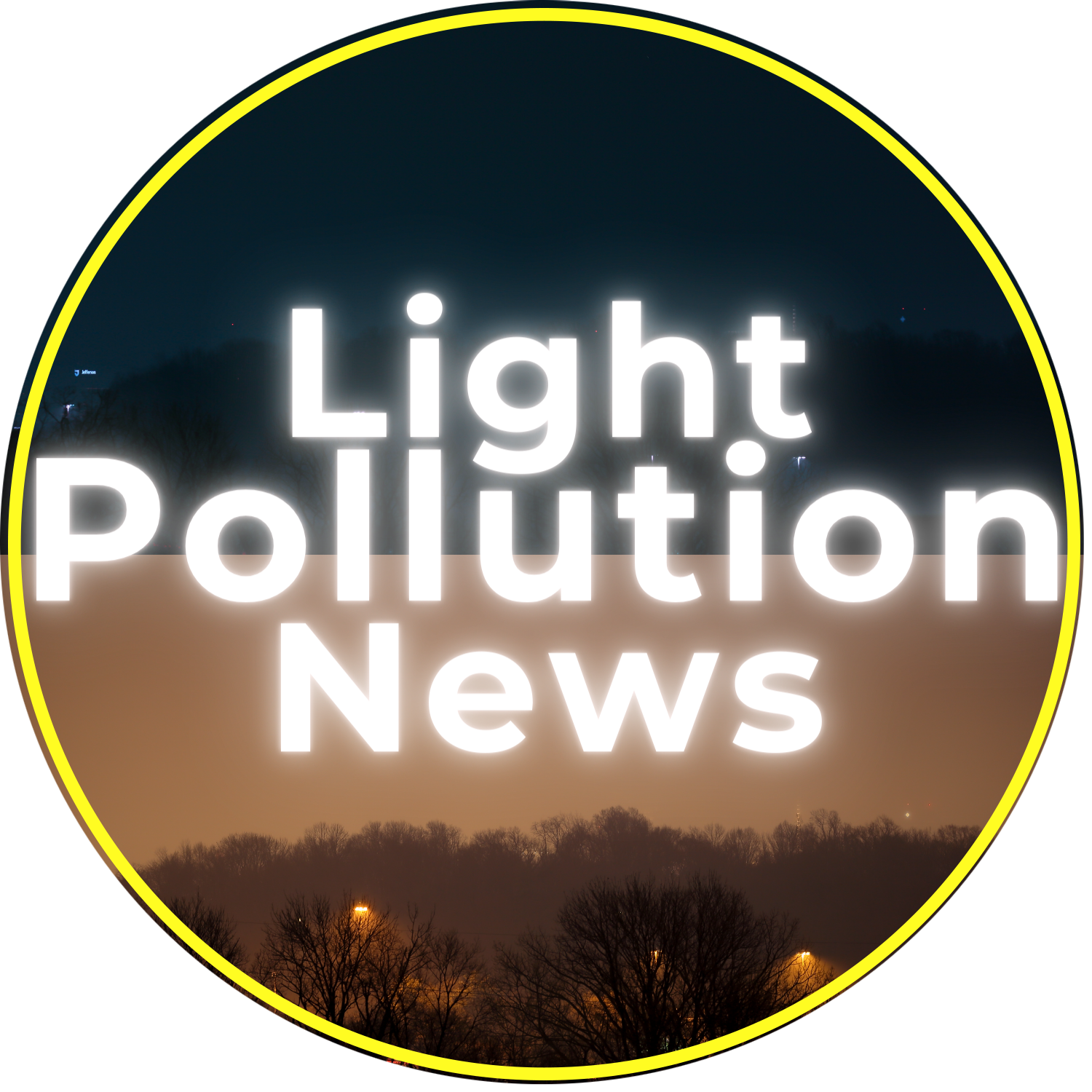
October 2025: 50 Tons a Day!, Light Pollution News
Join our mailing list. Follow us at LinkedIn, Instagram, Facebook, & Tiktok.
This Episode:
What a show we have for you today! The FCC wants to keep the National Environmental Policy Act away from the Space Economy; the US Open showcases how good sports lighting can be; and how do you define ‘pollution’?
Listen to all this and more! With me today is Yana Yakushina, so you know it’s going to be a good one! Also here is astronomer James Lowenthal, and host of the Night Sky Tourist podcast, Vicky Derksen!
Hang on! A new Light Pollution News is coming right up!
Like What You See and Hear? Consider Supporting the Show.
A hearty thank you to all of our paid supporters out there. You make this show possible.
For only the cost of one coffee each month, you can help us continue to grow. That’s $3 a month. If you like what we’re doing, if you think this adds value in any way, why not say thank you by becoming a supporter!
Why Support Light Pollution News?
- Receive quarterly invites to join as a live audience member for recordings with special Q&A sessions post recording with guests.
- Receive all of the news for that month via a special Supporter monthly mailer.
- The satisfaction that your support helps further critical discourse on this topic.
Support Light Pollution News!
Host:
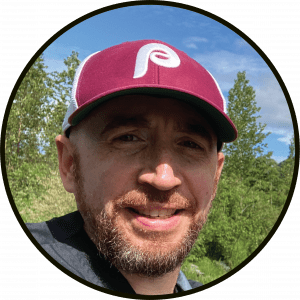
Guests:
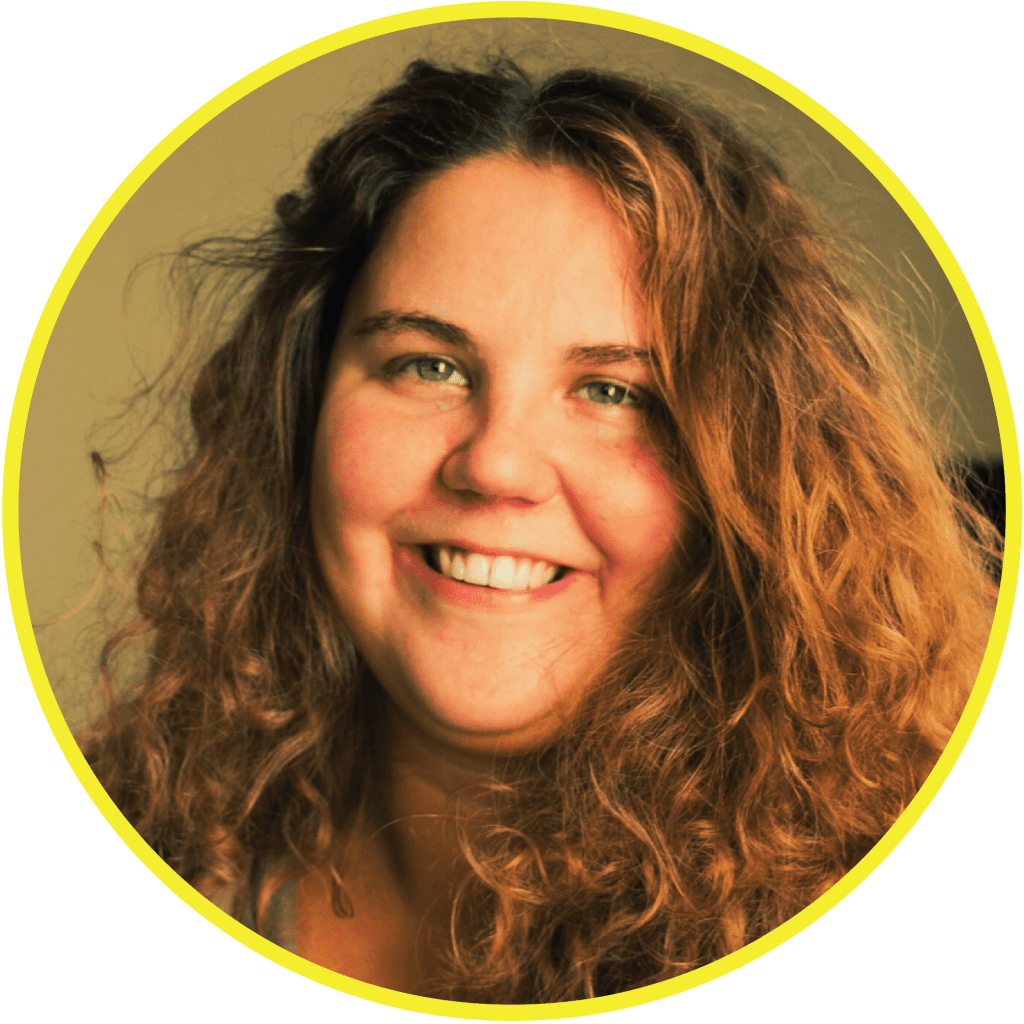
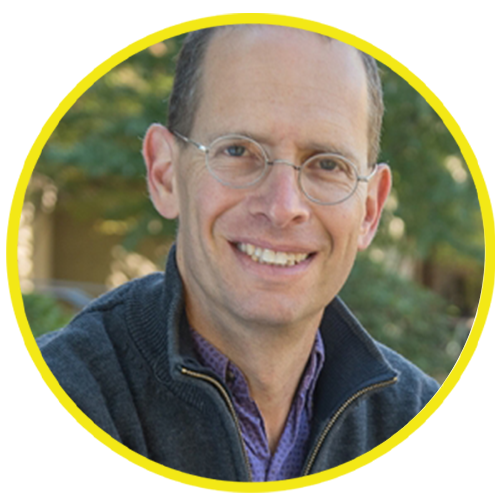
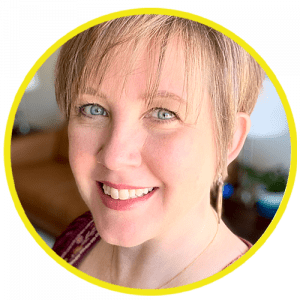
Yana Yakushina
Yana Yakushina is a lawyer, researcher, and dark sky protection educator. Yakushina is actively involved in initiatives related to light pollution mitigation and space law. Yakushina has successfully participated in international legal research projects, collaborating with organizations such as the EU Commission, Dark-Sky International, and the International Astronomical Union, among others.
Currently pursuing a PhD at the University of Ghent (Belgium) as part of the Horizon EU project – PLAN-B, Yakushina is shaping the legal framework for recognizing light pollution as a critical environmental concern. Yakushina also serves as one of the scientific coordinators of the project, with the main task of strengthening efforts to establish a robust legal framework for addressing the negative effects of Artificial Light at Night (ALAN) on the environment and biodiversity.
On the space law front, Yakushina serves as the Deputy Executive Director at the Space Court Foundation Inc. Additionally, in 2023, Yakushina became a co-founder of the Belgian dark sky protection organization – Living Night.
James Lowenthal
James Lowenthal is the Mary Elizabeth Moses Professor of Astronomy at Smith College in Northampton, Massachusetts, USA. He received his BS in Physics and Astronomy from Yale and his PhD in Astronomy from the University of Arizona. He studies the formation and evolution of galaxies, especially actively star-forming galaxies. He leads the local advocacy group Northampton City Lights; is the Massachusetts Chapter Leader for DarkSky; chairs the Light Pollution Sub-Committee of the American Astronomical Society Committee for the Protection of Astronomy and the Space Environment; and is President of the International Astronomical Union’s Commission on Site Protection (i.e., light pollution). He spends as much time as he can outside under the stars.
Vicky Derksen
Vicky Derksen hosts the Night Sky Tourist podcast and owns a stargazing business in Fountain Hills, Arizona, an International Dark Sky Community. She’s an Advocate with DarkSky International, past president of the Fountain Hills Dark Sky Association, and board member of the International Dark Sky Discovery Center. She’s writing a book about night sky experiences on Highway 89 from Mexico to Canada. You can find her podcast and blog at NightSkyTourist.com. Follow her on Facebook and Instagram at Night Sky Tourist.
Full Article List:
- The endangered night: the challenge of light pollution within the international environmental legal context, Journal of Environmental Law.
- What Is a Black Moon? The Unusual Sky Phenomenon Will Occur Later This Month, but Don’t Expect to See It, Margherita Bassi, Smithsonian Magazine.
- Have a one-hour blackout during one day per week to tackle light pollution, UK Petition.
- Hon. CM Devendra Fadnavis: Maharashtra Leads India in Dark Sky Conservation | National Space Day, Astron Era.
- On National Space Day, Fadnavis pledges India’s first state Dark Sky Policy, and what it could unlock for Maharashtra, ANI, Tribune.
- Judge rules Florida must halt construction and stop bringing new detainees to ‘Alligator Alcatraz’, Jordan Rubin, MSNBC.
- Appeals court rules Florida’s “Alligator Alcatraz” detention site can stay open, Joe Walsh, CBS News.
- SMITH, LEO F v. MULLINS, RAHEEM L Et Al, State of Connecticut Judicial Branch.
- Modernizing the Commission’s National Environmental Policy Act Rules, Federal Register.
- Is Starlink Bad for the Environment? FCC Doesn’t Think It Should Weigh In, Michael Kan, PC Mag.
- Have a one-hour blackout during one day per week to tackle light pollution, UK Petition.
- Port Marine Terminal Lighting Program, Dark Sky International.
- Light Pollution as Antichrist, The Imaginitive Conservative.
- Vatican astronomer praises NZ’s dark sky sanctuaries, 1News.
- GARDENISTA: 10 Easy Pieces: Downlights, Michelle Slatalla, Gardenista.
- These ‘Mushroom Lights’ Might Be the Most Magical Way to Light Your Garden — Dreamy, Ethereal, and They’re Surprisingly Chic, too, Emma Breislin, Livingetc.
- Glow-in-the-dark houseplants shine in rainbow of colours, Katherine Bourzac, Nature.
- Sunlight-powered multicolor and uniform luminescence in material-engineered living plants, Matter.
Light Pollution News: October Highlights
UK Light Pollution Initiatives
- ‘Don’t Neglect the Night’ Campaign: Buglife continues advocacy efforts for nocturnal wildlife protection
- Weekly Blackout Petition: UK Parliament petition proposes one-hour weekly blackouts of streetlights and electrical billboards (currently 36 signatures, needs 10,000 for government response)
US Satellite Regulation Changes
- FCC NEPA Rule Modernization: Proposed rule would exempt satellite companies from environmental reviews
- Comment Period: August 19 – September 18, 2024 public feedback window
- Industry Response: Starlink, AST SpaceMobile, Globalstar claim no environmental impact; Viasat disagrees
- State Opposition: 15 Attorney Generals from Texas to Vermont oppose the exemption
Everglades Detention Facility Legal Battle
- Initial Injunction: Judge Kathleen Williams ordered the removal of lighting and infrastructure within 60 days
- Appeals Reversal: Court of Appeals overturned the decision 2-1, citing state ownership and lack of federal funding
- Environmental Impact: 2,000 acres of Florida panther habitat lost
Connecticut Court Case
- Leo Smith Lawsuit: Challenge to the court system’s non-compliance with decorative lighting limits
- Motion to Dismiss: The Court system claims sovereign immunity and a lack of standing
- Ongoing Litigation: Smith filed objections and requested oral arguments
International Developments
India’s Dark Sky Policy
- Maharashtra State Leadership: New dark sky policy launched on National Space Day (August 25, 2025)
- Recognition: 2024 Asian Dark Sky Defender Shweta Kulkarni honored by Chief Minister
- Tourism Integration: Policy formally ties dark sky preservation to tourism development
Scientific Research and Technology
Starlink Satellite Brightness Study
- Generation Comparison: First-gen satellites (2019-2022) 22% more impactful than second-gen (2023+)
- Mitigation Techniques: Gen-2 features tilted solar panels and dark exterior paint
- Orbital Height Benefits: Lowering the orbit by 200km could reduce observational interference by 40%
Glow-in-the-Dark Plant Innovation
- South China Agricultural University: Breakthrough in creating luminescent succulents
- Multiple Colors: Blue, green, and red options with 1-2 hour glow duration
- Technology: Phosphate-coated strontium aluminate particles (up to 9 micrometers)
- Commercial Precedent: Light Bio’s $30 glowing petunia is already available
Sports and Commercial Applications
US Open Tennis Lighting Success
- Responsible Lighting System: Digital controls for brightness and temperature across 17 courts
- Reduced Glare: Improved conditions for broadcast crews and players
- Musco Sports Lighting: Company behind installations at Petco Park, Camden Yards, and dark sky-designated Nova Scotia facility
Port Marine Terminal Program
- Dark Sky International Initiative: New program promoting responsible lighting in maritime facilities
- Industry Standards: Focus on reducing light pollution in commercial port operations
Religious and Cultural Perspectives
Vatican Astronomy Support
- Brother Guy Consolmagno: Vatican astronomer endorses New Zealand’s Dark Sky sanctuaries
- Spiritual Connection: Light pollution “robs everyone” of perspective-giving night sky experiences
- Pope Benedict Quote: “Humans can create light that blinds us to God’s light”
‘Light Pollution as Antichrist’ Analysis
- Urban Light Bubble Effect: City dwellers see only ~100 stars nightly
- Philosophical Impact: Artificial lighting contributes to human overvaluation and disconnection from nature
- Religious Institutions: Noted as major contributors to light trespass, particularly in Philadelphia
Landscaping and Consumer Solutions
Garden Lighting Trends
- Downlighting Best Practices: Continued emphasis on proper exterior premise lighting
- Solar Mushroom Lights: Alternative to traditional spotlighting with soft glow technology
- Stylish Fixture Options: Gardenista features curb appeal enhancement solutions
Astronomical Events
Black Moon Phenomenon
- Definition: Third of four new moons in a season or second new moon in a month
- Frequency: Occurs every 33 months due to Gregorian/lunar calendar timing differences
- Visibility: Invisible event highlighting calendar peculiarities
Light Pollution News: October Read Along
Yana, let’s start off with your recently released article, “The endangered night: the challenge of light pollution within the international environmental legal context.” Correct me if I’m wrong here, but you attempt to make the case that the light pollution is an environmental issue. Why don’t you explain to us what this article attempts to do?
Did any of you catch the ‘Black Moon’ last month? Apparently, this invisible celestial occurrence is the third of four new moons of a season or the second of two new moons of a month.
Of course, the ‘Black Moon’ is essentially a rebranded new moon that simply showcases the peculiarities of timing associated with our Gregorian calendar and that of the lunar month. The additional new moon occurs every 33 months…and since it’s new…you probably won’t see it.
On the policy front this month, over in the UK, we spoke about the ‘Don’t Neglect the Night’ campaign by Buglife a couple of months back (to which, if you’re so inclined to support such things, be sure to sign up.
There’s also this, a petition to the UK Parliament to ‘Have a one-hour blackout during one day per week to tackle light pollution.’
The petition ‘urges’ the government to put in place a one hour blackout of “all streetlights, bright lights and electrical billboards so people can experience what zero light pollution is like and to experience what are ancestors experienced many years ago.” Note, that’s ‘are’ with an a-r-e. I’m assuming a simple typo. But no fear, at 10,000 signatures, the petition will garner government response, and at 100,000 signatures it will be brought up for debate…currently, they’re at 36…that’s 36 signatures.
I guess the big news in policy this month, which will break sometime after this show is recorded, is the commentary period on the proposed FCC rule to essentially allow satellite companies, many of which are owned by billionaires, to skate Scott-free with regard to any environmental regulation. The rule making draws its directive from one of our President’s many decrees, which requires federal agencies to trim out the fat, so to speak, in government regulation.
The Modernizing the Commission’s National Environmental Policy Act Rules will categorically ban anyone involved in the space based economy from being bound to environmental review. According to the FCC, it intends to take up Starlink’s position of there being ‘no meaningful effects’ from satellite activities on the human environment.
Now, this position by the FCC isn’t without precedent. In the 1980s, the FCC excluded large satellite constellations from environmental reviews. Back then, satellite constellations included numbers in the hundreds, not thousands. Additionally, nowadays it’s estimated that satellites are being launched every 34 hours.
The comment period opened up on August 19th and extended until September 18th. During that time, groups attempted to mobilize public feedback on the impact of exempting the space economy from any environmental oversight. While satellite providers including Starlink, AST SpaceMobile, and the Apple partnered Globalstar, all claimed that there’s no possible way in all of the emptiness of space that they could have an impact on the Earth, provider Viasat said…you know what – maybe we are having an impact? Per Viasat, “large satellite constellations can adversely impact the environment in ways that could not have been imagined when the commission first adopted its broad categorical exclusions under NEPA.”
I should note that Viasat, unlike the others, is not clamoring to gain direct to cell phone satellite connectivity. We’ve mentioned some of the pitfalls of Starlink on prior shows. Viasat is a provider that offers internet services from geostationary satellites, and if you’ve flown with American Airlines or Delta here in the US, you may have utilized their in-flight services.
Attorneys General of fifteen states also chimed in on the proposal, asking for a clearer rule from the FCC with regards to how it plans to comply with the National Environmental Policy Act (NEPA) – those included a variety of states from Texas to Vermont to Delaware, Washington, California, and so on.
I should also note that you, the astute listener at home will recall last year’s defeated appeal from Dark Sky International (along with Dish Network) against the 2022 approval of Starlink’s gen2 satellites, whereby DSI argued that the FCC had not upheld the required NEPA review. The judge in that case, Naomi Rao affirmed the FCC’s belief that Starlink “had no significant effect on the quality of the human environment and are categorically excluded from environmental processing.”
Also on the policy front, the 2024 Asian Dark Sky Defender, Shweta Kulkarni, was recognized by the Chief Minister of her home state, Maharashtra. The Chief Minister, who operates in a similar manner to what us in the US would consider a governor to be, took to Youtube to honor Kulkarni for her work in Astron Era – an educational platform designed to promote tangible astronomy education to everyday individuals.
Per an Instagram post on August 22nd, Maharashtra claims that it leads India in its tackling of the problem of light pollution. A new dark sky policy took hold on the same day, which is ‘National Space Day’ in India. Among the many things the legislation intends to do, is to more formally tie tourism to dark skies.
US District Judge Kathleen Williams issued a preliminary injunction on the operations of ‘Alligator Alcatraz.’ You’ll recall that the Trump Administration set up one of its internment camps for illegal immigrants on an old runway property in the middle of the Everglades. The order gave the government 60 days to remove “fencing, lighting fixtures, and all generators, gas, sewage, and other waste,” from the site. The order also allowed the government to continue operating should it make environmentally responsible corrections to the facility.
Well that was all good, but then a week later, the US Court of Appeals, led by Judge Barbara Lagoa and Judge Elizabeth Branch said to hell with Judge Williams’ decision, overturning it 2-1. In addition, the appeals court believed the state and federal lawyers would be successful in showing that the site isn’t subject to the ‘National Environmental Policy Act’ because the facility is apparently state owned and has yet to receive federal funding.
This spurred the Department of Homeland Security to troll “this lawsuit was never about the environmental impacts of turning a developed airport into a detention facility, it has and will always be about open-borders activists and judges trying to keep law enforcement from removing dangerous criminal aliens from our communities, full stop.”
The plaintiffs here included the Miccosukee Tribe of Indians, the Friends of the Everglades, and the Center for Biological Diversity…all of which, contrary to DHS’s assertion, were highly environmentally motivated. Judge Williams noted that the construction of this internment facility has cost the Florida panther about 2,000 acres of lost habitat.
In case you at home were curious about another story we spoke about last month, namely that of Leo Smith and his lawsuit against the Connecticut Court System. You’ll recall that the court decided it wasn’t going to be a party to a Connecticut law limiting the use of non-essential, decorative lighting on public buildings after a certain time of night..well at the time of this recording, the court filed a motion to dismiss.
The court system requested dismissal of the “Plaintiff’s claims as barred by sovereign immunity and due to a lack of standing because [the] Plaintiff fails to allege unreasonable conduct, impairment of a natural resource, or causation.”
Since that time, Smith filed an objection and a request for oral arguments regarding the motion by the defendant.
As you at home are probably aware, the trend of internet relaying satellites has posed a problem for land based astronomy. There’s a new study preprint Arxiv that measured the brightness of the Starlink constellation. It measured the brightness of two types of Starlink satellites – the ones launched between 2019 and 2022, which are considered the first generation satellites. They’re smaller and tend to be brighter due to solar panel reflection. …And the second generation satellites launched starting in 2023. You’ll recall that these gen 2 satellites were larger but they had some baked in light mitigation techniques – including tilting solar panels away from Earth and utilizing a special exterior dark paint on the body.
The study found, unsurprisingly, that the first generation satellites were much more impactful on night sky brightness – interfering with scientific observations at a rate of 22% higher than the second generation. However, it also posited that – hey, why stop here! What would happen if these satellites orbited 200 km lower than their current orbital height of 550 km? The answer is that it would gain them a 40% reduction in observational loss.
I’m sure you all heard the news. The US Open showcased some great tennis matches with all 17 courts lit under some very responsible lighting. The system appears to be digitally driven with brightness and temperature controls managed from what I presume to be a central location.
During the conversion, Chuck Jettmar, the US Tennis Association’s managing director of capital projects and engineering, worried initially that the new lighting might impact folks up in the broadcast booth and the crews filming down on the court. But quite the opposite appears to have occurred, in that they found the lighting to be more focused and with a reduction in glare – something that I might add is a bit out of control in modern sports – at least here in America.
Musco Sports Lighting has done a number of notable sporting venues, including Petco Park in San Diego, [one of my favorite places,] Camden Yards in Baltimore, and, notable for its dark sky designation, the Universite Sainte-Anne outdoor sports facility in Nova Scotia. For you at home who are wondering what these look like – well you’ve probably seen them at your kids’ soccer field. They tend to be used more in youth sports than at the professional level.
Also, this month, Dark Sky International announced its Port Marine Terminal Lighting Program. The program looks to promote responsible lighting practices in ports.
Let’s kick off this show’s main slate of articles. The first one here is something that I find very interesting. It’s apparently a reprint from last year but it brings up a good viewpoint that I think fits in well with today’s show.
It’s not odd to have religious articles pass into my feed. Last time, back at the start of 2024, I had a really well researched piece by a pastor down in Alabama…and there was also the church out in Michigan whose pastor installed lighting controls for the congregation to enjoy the northern lights together.
This one is a little different. It comes to us from the Imaginative Conservative, a right wing publication that leans into its Christian heritage, namely Roman Catholicism for this piece….which as a side note I find interesting considering right here in Philly, religious institutions are a major source of light trespass and light pollution – with the Catholic Church properties (think schools, convents, etc) sitting high at the top of the list.
So what I liked about this piece, which has the highly provocative title – ‘Light Pollution as Antichrist,’ – it wasn’t the title by the way; it was that it points out something that I think illustrates author, Columba Silva’s, thesis with relative ease. That is, from inside the bubble, we sit in our lit cities and our bright neighborhoods only seeing around 100 stars a night. During this time, us humans tend to buy into what the author describes as a lie that we’re evolution’s greatest achievement…we overvalue ourselves and buy into the myth that everything great is constructed or bent by and to our will.
Since we’re here talking religion, the Vatican astronomer, Brother Guy Consolmagno approves of New Zealand’s Dark Sky sanctuaries. Brother Guy, who’s best known for his ‘Turn Left at Orion’ book said ‘[Light Pollution] robs everyone around you from being able to see the glorious [nighttime] sky…, the sky that can give you a sense of perspective, that can be consoling, or a little bit frightening, depending on where you are or what you’re doing.’
He also goes on to reference a quote by the late Pope Benedict, “we humans can create light that blinds us to God’s light.”
Side note, addendum to the Brother Guy piece. A few weekends back, I was lucky enough to share the observing field at Cherry Springs with his coauthor for ‘Turn Left at Orion’, a gentleman named Dan Davis. Dan, a trained geologist, was actually working on a lunar geology book. We had a nice lunar lesson before the moon went down that night.
Let’s close out this episode with some landscaping. Now we all know the value of downlighting, especially as it pertains to your exterior premises – namely, your garden and porch areas. Gardenista ran an article featuring some stylish fixtures that you could implement to spruce up the curb appeal of your home.
Then there’s this growing trend of glowing your gardens and flowerbeds. There are solar powered mushrooms that light up at the top of the mushroom – providing a soft glow in the area installed. I’m not sure if this is a much better alternative to spotlighting your trees and plants all night, but maybe it is. Visually, at least, it appears to be more intriguing in the absence of landscape lights.
But, really, I wanted to get us over to this….Who needs solar panel mushrooms when you can have glow in the dark plants!! Researchers at the South China Agricultural University have found a way to make succulents glow at night.
Now, there’s some backstory here. Researchers have long been at work on creating what they call ‘living lighting.’ Last year, Light Bio, an Idaho based biotech company fused some genes from a glow in the dark mushroom into a petunia plant. This plant hit the market for around $30 USD. It puts off a faint green glow.
The researchers working on the succulents were able to create multiple glow in the dark colors from the first time. These colors include blue, green and red and proceed to glow for 1-2 hours post-charging; of which these plants can use multiple light sources to charge – both indoor and natural sunlight.
The researchers accomplished this by injecting the succulents with a phosphate coated strontium aluminate particle material that collects energy and releases it slowly – apparently this is something in use in children’s toys and lab experiments to trace things through animal bodies. The phosphate makes this injection water resistant.
The sizing also is of note, as these are the largest particles to date to be included injected into a plant – sitting up 9 micrometers for the largest particle set, which dwarfts prior experimentation in the nanometer range. For level setting, a typical red blood cell sits in the 6-8 micrometer range. Researchers attributed the success of these larger particles to the dense, uniform structure of the succulent leaves.
